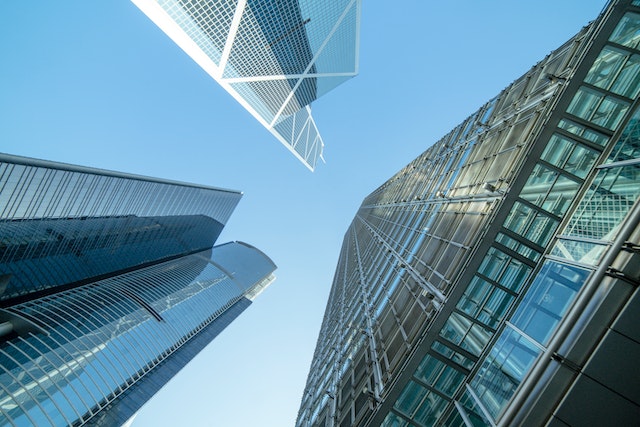
How do you get water to the top of a skyscraper? Water is pumped up to a series of tanks at different heights.
Early pumps were usually suction pumps and a suction pump cannot be used to get water to the top of a skyscraper. A suction pump cannot pump water to a height greater than 10.3 m. There are two reasons for this. The first is the weight of the water. When you suck a drink up a straw, you remove the air in the straw by sucking it into your lungs and the vacuum you create causes the water to rise up into your mouth. You would think you could do this for any height, but you cannot. Water always has air pressure pushing down on it. At sea level, this air pressure is 1013.25 millibars or 14.5 psi. That means the air weighs 14.5 pounds for every square inch, or 1.2 kg per square meter. When you put your straw in the drink and suck, you reduce the pressure above the liquid in the straw, but it remains the same on the liquid outside the straw, so the weight of the air pushes the water up the straw. You are not pulling the water up, the weight of the air is pushing the water up. If you increase the length of your straw and try to draw water much higher, it will stop rising at 10.3 m. This is because at that height the weight of the water being pulled down by gravity is equal to the air pressure outside the pipe and it will not rise any more. No matter the size of the pipe, you cannot make it rise any more than 10.3 m with a vacuum above the water. The second reason is that the boiling temperature of water decreases as the air pressure decreases and in a partial vacuum the water starts to boil. This makes a layer of water vapor over the water, which reduces the vacuum and means that no pump can actually raise water to 10.3 m.
So, how do you get water to the top of a skyscraper? The problem with skyscrapers is relatively recent because there have only been tall buildings since the invention of the elevator. Pumps were used to remove water from mines and they became more efficient after the industrial revolution. Mines were so deep that pumps that suck the water out couldn’t be used. Different types of pump that push the water were invented. These days a booster pump is used. A booster pump has a propellor inside it, in much the same way as a jet engine. The propellor is powered by a motor and as it spins it pushes water through at a higher pressure, meaning it can rise much higher than the natural limit.
The early skyscrapers used a tank on the roof to supply water to the whole building. This was called a gravity tank. The water would be pumped from the ground to fill the tank and then the pump would only be used again if the level in the gravity tank fell. Water would then be supplied to the whole building along pipes using simple gravity, hence the name of the tank. This is a simple idea, but it does have several problems. The first is the weight of the tank on the roof. As a building gets taller and more water is required, the tank will be much heavier, which causes structural problems. The second problem is that the water under the force of gravity will have a high pressure that will need to be controlled to make it usable. The third problem is that the tanks on the roof can corrode or animals might find their way into them. Because of these reasons, gravity tanks are not really used anymore.
One of the biggest problems with a gravity tank is that the pump needs to be able to pump water to the roof of the building in one go. With earlier skyscrapers, this was possible, but with modern skyscrapers, such as the Burj Khalifa at 828 m, the pump would have to be so powerful and the water under such great pressure that it would be an explosive accident waiting to happen. Modern skyscrapers supply water by pumping it to holding tanks at different floors. For example, the Burj Khalifa’s water is first pumped to a massive tank on the 40th floor. Then it is pumped to 75,000 liter tanks on every 30th floor. Once these tanks are full, the water flows down using gravity to supply the building.
So, water is pumped up a skyscraper in stages because the pressure and power required to get it to the top of the building in one go would be too high. And this is what I learned today.
Sources
https://www.physicsforums.com/threads/pump-has-a-suction-lift-of-more-than-10-3-m.937011/
https://www.sloan.com/resources/education/infographics/how-water-works-skyscrapers
https://www.physlink.com/Education/Askexperts/ae443.cfm
https://en.wikipedia.org/wiki/Atmospheric_pressure
https://www.popularmechanics.com/home/how-to/a152/1275136/
https://www.freshwatersystems.com/blogs/blog/what-is-a-water-booster-pump-and-how-does-it-work
